New app helps seniors rate ‘age-friendliness’ of locations and services
A newly-released app lets seniors rate the ‘age-friendliness’ of restaurants, community centres, libraries, crosswalks, shopping centres and public transit in their city ― and share their ratings with others.
The free Age-CAP app uses GPS to pinpoint the user’s location, no matter which city they live in worldwide. It’s available for iPhone, iPad and Android devices.
Users rate locations on things like general accessibility, availability of seating, lighting levels, staff attitudes and background music levels. The app then produces an overall rating, based on the World Health Organization’s age-friendly cities guidelines.
People can also simply browse the database to see which locations and services in a neighbourhood are considered “age-friendly” and why.
The Age-CAP (Age-friendly Communities Assessment ApP) was developed by researchers at the University of Toronto (U of T) and Toronto Rehabilitation Institute, a member of the University Health Network.
“It empowers older adults to evaluate what’s senior-friendly and what’s not,” says one of the app’s creators, Alex Mihailidis, a U of T-Toronto Rehab scientist. “This is a new way for seniors to create a crowd-sourced database of age-friendly locations.”
The team hopes the app will promote ‘active’ aging, encouraging seniors to get out and about in the community. Social isolation in the elderly can lead to depression and physical problems, such as loss of appetite and difficulty sleeping.
There’s also a safety dimension. “Already, people are using the app to warn others about dangerous crosswalks, and subway stops that don’t have elevators,” says Mihailidis. Some of the features users can rate, by indicating agreement or disagreement on a scale of one to five, include:
- Restaurants: “The menu and bill were written in a legible font and size.”
- Community centres: “A senior’s discount is offered on classes and memberships.”
- Libraries: “Advertisements for seniors programming were readily displayed.”
- Crosswalks: “I had enough time to cross at the crosswalk during the allotted time.”
- Shopping centres: “There were areas to sit and rest.”
- Public transit: “There was appropriate shade available during my wait.”
People can also offer general comments, and create new categories for locations or services they wish to rate.
Will seniors embrace the app? Mihailidis points to an upward trend in mobile technology use among seniors, citing statistics that suggest between 30 and 70 per cent are using smart-phone devices.
As the app’s database grows, it can be used to advocate for improvements that make cities more senior-friendly, says Mihailidis. He hopes businesses, including restaurants, and municipal politicians will take note of the ratings.
Mihailidis developed the Age-CAP app with Barry Trentham, an assistant professor in U of T’s Department of Occupational Science and Occupational Therapy, and U of T students Manas Bhatnagar (clinical engineering) and Jennifer Jimmo (occupational therapy). Mihailidis is a senior scientist and the Barbara G. Stymiest Research Chair in Rehabilitation Technology at Toronto Rehab-UHN, an associate professor of occupational science and occupational therapy and a core faculty member in the Institute of Biomaterials and Biomedical Engineering, with a cross appointment in the Department of Computer Science at U of T.
The app was developed with funding from Toronto Rehab and is owned by Toronto Rehab-UHN.

Optimize this page for search engines by customizing the Meta Title and Meta Description fields.
Use the Google Search Result Preview Tool to test different content ideas.

Select a Meta Image to tell a social media platform what image to use when sharing.
If blank, different social platforms like LinkedIn will randomly select an image on the page to appear on shared posts.
Posts with images generally perform better on social media so it is worth selecting an engaging image.
Margaret Polanyi
New cystic fibrosis drug approved by Health Canada
Health Canada has approved a new drug for treating some cystic fibrosis patients that was tested by researchers at the University of Toronto and St. Michael’s Hospital.
“For people with cystic fibrosis with a specific mutation — about three per cent of Canadians with cystic fibrosis — this drug will treat the basic CF defect in all cells in their body,” said Elizabeth Tullis, Professor of Medicine at U of T and Director of St. Michael’s Adult Cystic Fibrosis Clinic, the largest in North America. “This is a game-changing drug.”
The drug, Kalydeco, also known by its generic name ivacaftor, is manufactured by Vertex Pharmaceuticals.
Cystic fibrosis is an inherited chronic disease that affects the lungs and digestive system. A defective gene and its protein product cause the body to produce unusually thick, sticky mucus that clogs the lungs and leads to life-threatening lung infections. It also obstructs the pancreas and stops natural enzymes from helping the body break down and absorb food. The condition is the most common fatal genetic disease affecting Canadian children and young adults.
Tullis noted that researchers led by Professor Lap-Chee Tsui at U of T and The Hospital for Sick Children discovered the cystic fibrosis gene in 1989.
“Health Canada’s decision takes us full circle. Twenty-three years later we now have a therapy based on that discovery. It is an excellent example of personalized medicine.”
Toronto was the only site outside of the United States involved in the Phase 2 clinical trial for the drug and had the largest number of patients enrolled in the Phase 3 trial, results of which the New England Journal of Medicine published in 2011.
Tullis said people involved in the Phase 3 clinical trial had improved lung function, fewer chest infections and gained weight. “It worked in multiple organs in the body, and especially in the lungs, which is important as lung disease is the main cause of death in people with cystic fibrosis,” she said.
Tullis said the drug was approved for the three per cent of cystic fibrosis patients with the G551D genetic mutation, which means about 110-120 Canadians a year would benefit from it.
Kalydeco has already been approved by the Food and Drug Administration for use in the United States and by European regulators. The drug must now be reviewed by the Canadian Agency for Drugs and Technologies in Health, which will recommend whether provinces should add it to the list of drugs covered by publicly funded insurance programs.

Optimize this page for search engines by customizing the Meta Title and Meta Description fields.
Use the Google Search Result Preview Tool to test different content ideas.

Select a Meta Image to tell a social media platform what image to use when sharing.
If blank, different social platforms like LinkedIn will randomly select an image on the page to appear on shared posts.
Posts with images generally perform better on social media so it is worth selecting an engaging image.
Leslie Shepherd
Dean Catharine Whiteside Named One of Canada’s Most Powerful Women in 2012
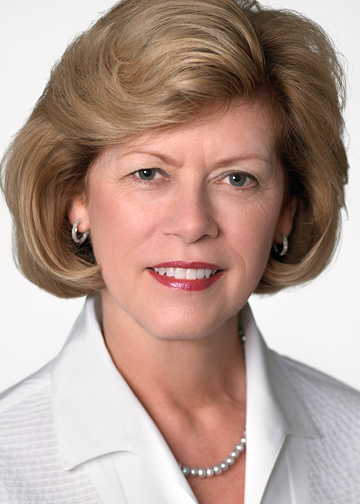 The Women’s Executive Network has named the Dean of the University of Toronto Faculty of Medicine one of Canada’s Top 100 Most Powerful Women for 2012.
The Women’s Executive Network has named the Dean of the University of Toronto Faculty of Medicine one of Canada’s Top 100 Most Powerful Women for 2012.
Professor Catharine Whiteside is the first female Dean of U of T’s Faculty of Medicine. She joins women from the public, private and not-for-profit sectors on the prestigious Top 100 list, which recognizes the professional achievements of women across the country.
“It’s a huge honour to be recognized alongside women who have had such an extraordinary impact in their fields,” said Prof. Whiteside, who is also the Faculty’s Vice-Provost, Relations with Health Care Institutions. “I hope this recognition will inspire other women to seek challenging professional roles in which they can reach their potential and make a difference in the world.”
The network’s Top 100 award recipients are chosen for their strategic vision and leadership, their organization’s financial performance, and their commitment to their communities. Past awardees include Sheila Fraser, former Auditor General of Canada, and BMO Financial Group executive Sherry Cooper.
“On behalf of the WXN community of 18,000 women, we congratulate each of this year’s winners who we honour as part of the 10th year of the Top 100 Awards,” said Pamela Jeffery, Founder, Women’s Executive Network. “This is an extraordinary group of female leaders who join our community, and they truly embody the qualities WXN strives to recognize; they are dynamic, inspiring and engaging leaders blazing new trails for the next generation.”
Prof. Whiteside has been Dean of U of T’s Faculty of Medicine since 2005. The Faculty of Medicine at U of T is Canada’s largest, graduating nearly half of the medical doctors in Ontario and 25 per cent of the country’s health and biomedical PhDs. As Vice Provost, Prof. Whiteside oversees the Faculty’s partnership with nine fully affiliated hospitals and 18 community-affiliated hospitals and health facilities. With those partners, the Faculty conducted over $900 million in research in 2011 – 2012, making it one of the largest academic health science networks in the world.
Co-presented by Scotiabank and KPMG, the WXN Top 100 acknowledges women in several award categories, spanning a variety of industries: corporate executives, entrepreneurs, public and not-for profit administrators, and social and cultural trendsetters. Prof. Whiteside was honoured in the category of Public Sector Leaders.
Prof. Whiteside completed U of T’s Undergraduate Medical Education program in 1975, followed by postgraduate training in internal medicine and nephrology and a doctorate from U of T’s Institute of Medical Science. She joined U of T’s Department of Medicine in 1985 as a clinician-scientist and has engaged in basic research in the field of cellular mechanisms of kidney disease. In 1996, Dr. Whiteside became a full professor of medicine; prior to being appointed Dean of Medicine, she served as Associate Dean of Graduate and Inter-Faculty Affairs.
Top 100 award winners will be celebrated on December 5 at the Sheraton Centre Toronto during a leadership summit, which will offer insight to more than 400 women attendees. A gala dinner follows the summit, where attendees will hear from Laureen Harper, who will present the Public Sector Leaders Award category. Jeanne Beker, entrepreneur and TV personality, and Bonnie Brooks, Hudson’s Bay Company President and CEO, will also give keynote addresses.
A complete list of 2012 WXN Top 100 awardees can be found at www.top100women.ca.

Optimize this page for search engines by customizing the Meta Title and Meta Description fields.
Use the Google Search Result Preview Tool to test different content ideas.

Select a Meta Image to tell a social media platform what image to use when sharing.
If blank, different social platforms like LinkedIn will randomly select an image on the page to appear on shared posts.
Posts with images generally perform better on social media so it is worth selecting an engaging image.

EarthTones 2012 to benefit international aid initiatives for children
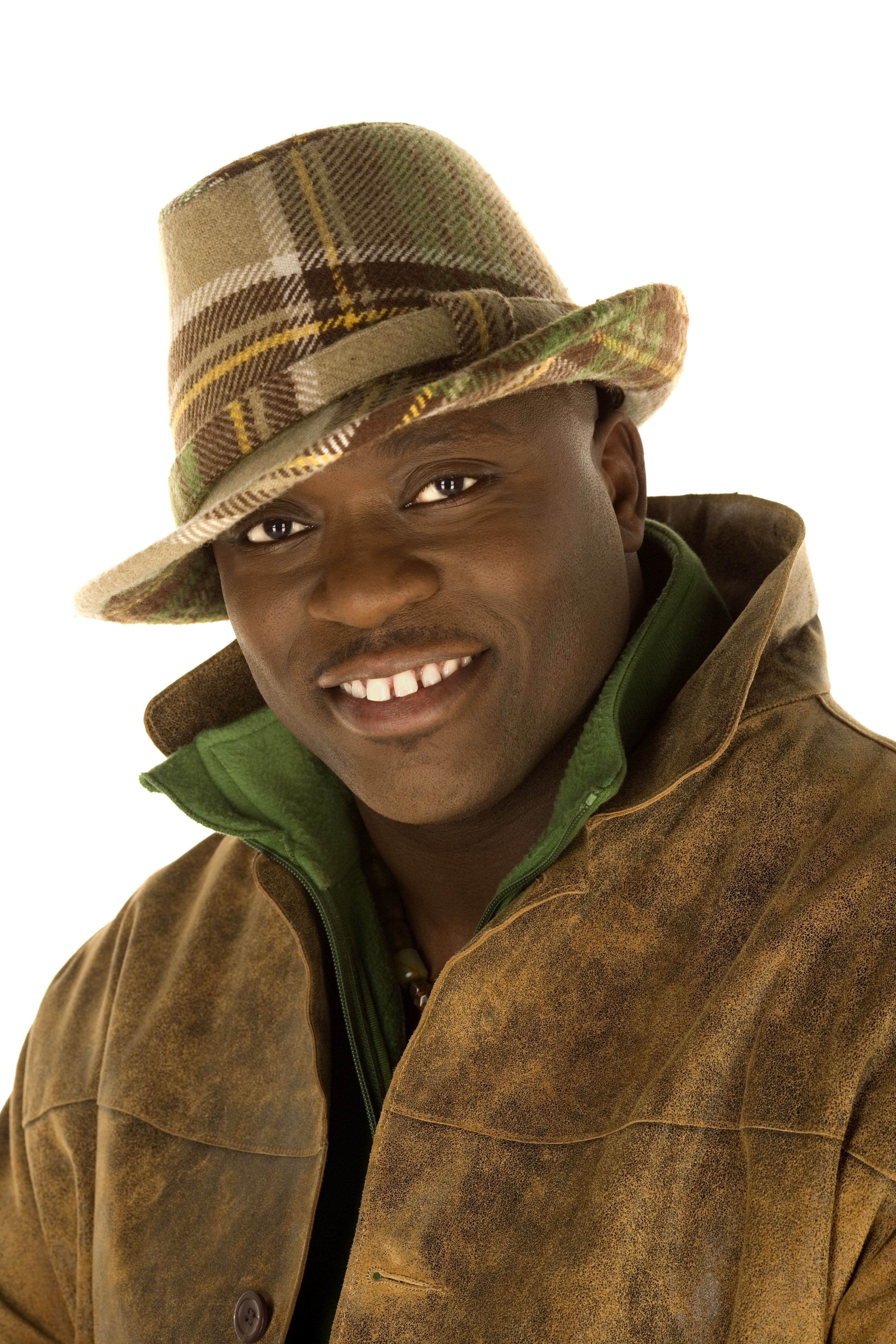 From soulful songs to hard-rocking rhythms, the lineup is set for EarthTones, the University of Toronto’s biggest benefit concert, organized by students and staff from the Faculty of Medicine.
From soulful songs to hard-rocking rhythms, the lineup is set for EarthTones, the University of Toronto’s biggest benefit concert, organized by students and staff from the Faculty of Medicine.
Hosted by Canadian Idol judge Farley Flex — a national music-industry mogul who was the founding Music Director of Toronto’s popular urban music radio station Flow 93.5 — the concert will support Canadian Feed the Children, Helping Hands International and CWEF Tanzania.
“Giving back is a responsibility we all have from the time we were born,” says Flex, director of Helping Hands International. “Music is a great way to bring awareness to important causes. EarthTones 2012 features some incredible talent and I know it’s going to be a night to remember.”
Faculty of Medicine staff and students started EarthTones in 2000. Since then, the annual event has raised more than $100,000 and supported more than a dozen charities. From comedic vocal to classical guitar, EarthTones 2012 features performances to suit every musical taste, including a medical parody of 50s rock songs by the Pro-Teens, a group of three professors from the Department of Biochemistry, and two original pieces by Orbital Groove, a Faculty of Medicine rock band.
While performers have traditionally been from the health sciences faculties, this year’s event has expanded to include acts from a variety of faculties. For example, Paul Comartin from the Faculty of Dentistry and Michaela Bekenn from the Faculty of Arts & Science will be performing original songs.
“We really wanted to stress interprofessionalism and branch out this year,” says Jessica Rabski, co-director of EarthTones and a second-year medical student. Rabski will perform an opera and piano number with her fellow co-director and medical student Christine Desjardins.
The duo first performed last year and were inspired to take on a leadership role this year. “I love the purpose behind EarthTones — it allows me to use music as a tool to help kids,” says Rabski. “Physicians need to be advocates for international health,” says Desjardins. “EarthTones lets me be a part of something bigger than being in a classroom.”
Last year’s concert raised nearly $20,000 and had nearly 500 attendees. Organizers hope to do even better this year and raise $30,000 to be split equally between the three charities.
“We have a fantastic lineup and we know this year’s event will be amazing. EarthTones has always gotten great feedback and we’re positive this year’s concert will be no exception,” says Rabski.
Event Details
Date:
December 1, 2012
Time:
7 p.m. (doors open at 6:30 p.m.)
Venue:
Convocation Hall
University of Toronto
31 King’s College Circle
Toronto, ON M5S 3G4
Cost:
$15 for students, $25 for general public
http://earthtones2012.eventbrite.ca/
Contact email:
earthtones2012@live.ca
Website:
uoftearthtones.com

Optimize this page for search engines by customizing the Meta Title and Meta Description fields.
Use the Google Search Result Preview Tool to test different content ideas.

Select a Meta Image to tell a social media platform what image to use when sharing.
If blank, different social platforms like LinkedIn will randomly select an image on the page to appear on shared posts.
Posts with images generally perform better on social media so it is worth selecting an engaging image.
Suniya Kukaswadia

Breathing Innovation
Professor Shaf Keshavjee remembers the moment on November 7, 1983 when he heard the news: a group of University of Toronto doctors had performed the world’s first successful single lung transplant at Toronto General Hospital (TGH). Still a medical student, Keshavjee was driving along Toronto’s Mount Pleasant Bridge when the news was broadcast on the radio.
“Just the thought that a lung might need replacing was sort of novel to me at the time and the fact that they could do that,” he says. “I thought it was remarkable.”
Tom Hall, the first patient to survive the procedure, lived another six years after his surgery. His operation was the first in a series of lung transplantation milestones at TGH by members of U of T’s Faculty of Medicine.
The procedure breathed new life into a surgery that had failed 44 previous times in attempts made around the world. The realization of what was now possible inspired Keshavjee’s current work as Director of the Toronto Lung Transplant Program, and Professor of Thoracic Surgery in U of T’s Department of Surgery.
Keshavjee scrubbed in as an intern when the world’s first double lung transplant was done at TGH in 1986. Later that same year, doctors at TGH performed the first pediatric lung transplant, and two years later, the first double lung transplant for Cystic Fibrosis was also achieved.
“I walked into a program by virtue of being a student at the University of Toronto,” says Keshavjee. “But it was the leading program in the world and it inspired me to be part of it, and to work to contribute and build it further. For the last 30 years, we’ve continued to be the leading program in lung transplantation.”
Keshavjee explains another Toronto milestone was reached in the early 1990s, when a solution known as LPD (low potassium dextran), was developed to make lungs safer, more stable and predictable. That was followed by a technique known as ex vivo lung perfusion, which was developed by Keshavjee and his team of researchers. It allows lungs to be removed from a donor, and genetically modified to better prepare them for transplant using a “personalized medicine” approach. The lungs can be examined, diagnosed, treated, and re-examined before they reach the recipient’s body. The process has already increased the number of donor lungs used.
“We now have the opportunity to improve lungs — make them work better than the way we found them — making a lung that looks more like you so that your body won’t reject it,” says Keshavjee.
“It’s just something that inspires people in our program every day — to know that this is where it all started and we all want to continue to push the limits, we all want to continue to transform the field,” says Lianne Singer, Medical Director of the Toronto Lung Transplant Program at University Health Network and Associate Professor of Medicine at U of T.
Singer leads a group of respirologists who are involved in the medical aspects of transplantation. This includes caring for patients from the time of referral, and providing follow-up care for the rest of their lives. She explains that the procedure’s positive outcomes extend far beyond a patient’s ability to get off of oxygen.
“They’re able to get back to work, they’re able to look after their kids or their grandkids, they’re able to travel and take up sports or hobbies that they enjoy that they weren’t able to do before – so we hear that from patients and so we know that transplant’s having that impact,” says Singer, whose research interests include quantifying the improvements in quality of life experienced by patients who undergo these procedures.
The changes seen over the last 30 years are thanks to the hard work and innovation by a range of specialists. “It’s not just an operation,” says Keshavjee. “It’s the research that leads to the innovations that we bring to the bedside, the breadth of the team – surgeons, respirologists, critical care doctors, anesthetists, nurses, perfusionists; it’s a complex program and a high performance team that’s able to pull off these remarkable achievements.”

Optimize this page for search engines by customizing the Meta Title and Meta Description fields.
Use the Google Search Result Preview Tool to test different content ideas.

Select a Meta Image to tell a social media platform what image to use when sharing.
If blank, different social platforms like LinkedIn will randomly select an image on the page to appear on shared posts.
Posts with images generally perform better on social media so it is worth selecting an engaging image.
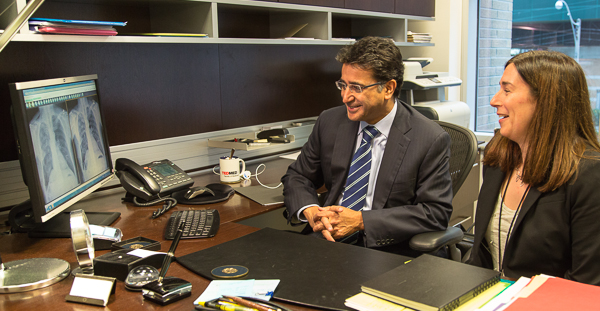
What Composes the Human Heart? U of T Researchers Crunch the Numbers
A foundational study published in top biomedical journal PNAS (Proceedings of the National Academy of Science) this week by researchers at the University of Toronto’s Institute of Biomaterials & Biomedical Engineering (IBBME) and the McEwen Centre for Regenerative Medicine have identified the optimal structure and cell ratio associated with heart function – and the discovery has already led the team to another research first: the engineering of the first-ever living, three-dimensional human arrhythmic tissue.
The study marks the first time that researchers have tried to define and formulate the precise type and ratio of cell types that produce highly functional cardiac tissue.
“Hearts are not just composed of one type of cell,” explained fourth-year IBBME PhD Student Nimalan Thavandiran and first author of the PNAS study. But until now, scientists have not known how to mix different cell types in engineered heart tissue in such a way that the tissue achieves the composition and maturity level of the native human heart.
Thavandiran solved this mystery by methodically separating out different cell types derived from human pluripotent stem cells and precisely mixing them back together. Using scoring metrics associated with functional hearts - contraction, electrical activity and cell alignment – Thavandiran was able to develop a formula for engineering highly functional heart tissue.
The composition of the cells is vital,” stated Thavandiran. “We discovered that a mixture of 25% cardiac fibroblasts (skin-like cells) to 75% cardiomyoctes (heart cells) worked best.” The carefully composed cell ratios were then grown in three-dimensional “wires” that mimic the structure of human heart tissue.
“An exciting result of our study is our ability to miniaturize the tissues into human heart micro-tissues that can be used to measure normal and diseased human heart responses to drugs,” emphasized Professor Peter Zandstra, corresponding author of the study and Canada Research Chair in Stem Cell Bioengineering at IBBME and the McEwen Centre for Regenerative Medicine.
From discovering the right composition of heart cells, the researchers next designed the first-ever three-dimensional arrhythmia tissue model.
Millions of people experience arrhythmia each year, a condition in which the feedback of electrical pulses of the heart is interrupted, leaving the heart unable to contract and pump blood effectively.
With the right cellular composition, though, the researchers were able to engineer the circular tissue model associated with arrhythmia. The team then applied electrical pulses to the arrhythmic tissues, ‘zapping’ the irregularly beating tissue into a state of regular contractions.
Since human heart cells aren’t easily grown, being able to engineer highly functional heart tissue from human stem cells is a vital concern for cardiac researchers.
“We can now combine this compositional knowledge with electrical stimulation and mechanical stimulation to obtain a truly biomimetic system necessary for cardiac research,” cited corresponding author Associate Professor Milica Radisic, core faculty at IBBME and the Department of Chemical Engineering and Applied Science, and Canada Research Chair in Functional Cardiovascular Tissue Engineering.
Stressing the urgent need for highly functional heart tissue to perform important drug screening research, Thavandiran added, “We’re making a really big push to bring this model to the marketplace.”
The team has been working with the Centre for the Commercialization of Regenerative Medicine (CCRM) to commercialize their tissue modeling platform.

Optimize this page for search engines by customizing the Meta Title and Meta Description fields.
Use the Google Search Result Preview Tool to test different content ideas.

Select a Meta Image to tell a social media platform what image to use when sharing.
If blank, different social platforms like LinkedIn will randomly select an image on the page to appear on shared posts.
Posts with images generally perform better on social media so it is worth selecting an engaging image.
Erin Vollick
'Fountain of Youth' Technique Rejuvenates Aging Stem Cells
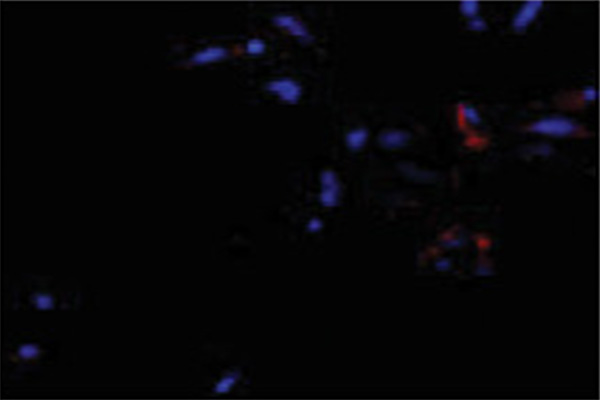 Toronto, ON — A new method of growing cardiac tissue is teaching old stem cells new tricks. The discovery, which transforms aged stem cells into cells that function like much younger ones, may one day enable scientists to grow cardiac patches for damaged or diseased hearts from a patient’s own stem cells — no matter what age the patient — while avoiding the threat of rejection.
Toronto, ON — A new method of growing cardiac tissue is teaching old stem cells new tricks. The discovery, which transforms aged stem cells into cells that function like much younger ones, may one day enable scientists to grow cardiac patches for damaged or diseased hearts from a patient’s own stem cells — no matter what age the patient — while avoiding the threat of rejection.
Stem cell therapies involving donated bone marrow stem cells run the risk of patient rejection in a portion of the population, argues Milica Radisic, Canada Research Chair in Functional Cardiovascular Tissue Engineering at the Institute of Biomaterials and Biomedical Engineering (IBBME) and Associate Professor in the Department of Chemical Engineering and Applied Chemistry at the University of Toronto.
One method of avoiding the risk of rejection has been to use cells derived from a patient's own body. But until now, clinical trials of this kind of therapy using elderly patients’ own cells have not been a viable option, since aged cells tend not to function as well as cells from young patients.
“If you want to treat these people with their own cells, how do you do this?"
It's a problem that Radisic and her co-researcher, Dr. Ren-Ke Li, think they might have an answer for: by creating the conditions for a 'fountain of youth' reaction within a tissue culture.
Li holds the Canada Research Chair in Cardiac Regeneration and is a Professor in the Division of Cardiovascular Surgery, cross-appointed to IBBME. He is also a Senior Scientist at the Toronto General Research Institute.
Radisic and Li first create a "micro-environment" that allows heart tissue to grow, with stem cells donated from elderly patients at the Toronto General Hospital.
The cell cultures are then infused with a combination of growth factors — common factors that cause blood vessel growth and cell proliferation — positioned in such a way within the porous scaffolding that the cells are able to be stimulated by these factors.
Dr. Li and his team then tracked the molecular changes in the tissue patch cells.
Image of aged stem cell after growth factors added
"We saw certain aging factors turned off," states Li, citing the levels of two molecules in particular, p16 and RGN, which effectively turned back the clock in the cells, returning them to robust and healthy states.
"It's very exciting research," says Radisic, named one of the top innovators under 35 by MIT in 2008 and winner of the 2012 Young Engineers Canada award.
Li and Radisic hope to continue their goal to create the most effective environment in which cells from older patients can be given new life. "We can create much better tissues which can then be used to repair defects such as aneurysms," Li says, as well as repairing damage caused by heart attacks.
The study was recently released in the Journal of the American College of Cardiology, the top journal in the field of cardiovascular medicine.
About IBBME
The Institute of Biomaterials and Biomedical Engineering (IBBME) is an interdisciplinary unit situated between three Faculties at the University of Toronto: Applied Science and Engineering, Dentistry and Medicine. The Institute pursues research in four areas: neural, sensory systems and rehabilitation engineering; biomaterials, tissue engineering and regenerative medicine; molecular imaging and biomedical nanotechnology; medical devices and clinical technologies.
Photo: Aged stem cell after growth factors added

Optimize this page for search engines by customizing the Meta Title and Meta Description fields.
Use the Google Search Result Preview Tool to test different content ideas.

Select a Meta Image to tell a social media platform what image to use when sharing.
If blank, different social platforms like LinkedIn will randomly select an image on the page to appear on shared posts.
Posts with images generally perform better on social media so it is worth selecting an engaging image.
Erin Vollick

Seizures Linked to Surgery Drugs can be Prevented by Anesthetics, U of T Team Finds
Two drugs commonly given during cardiac surgery can lead to convulsive seizures, but anesthetics can help cut the risk, according to new research from the Faculty of Medicine at the University of Toronto.
Patients undergoing complex heart operations or trauma surgery are often given tranexamic acid (TXA) and aminocaproic acid (EACA) to reduce blood loss. But Faculty of Medicine researchers found these drugs are associated with a four-to-six-fold increase in post-operative seizures. The risk is highest for cardiac surgery patients – between three and seven and a half per cent have seizures after arriving in the intensive care unit.
“Many Canadians are treated with these drugs, particularly TXA, each year to decrease bleeding and help patients avoid blood transfusions. Surgeons and anesthesiologists need to be mindful that these drugs can be pro-convulsants,” says Beverley Orser, Professor of Physiology and Anesthesiology at the University of Toronto and Canada Research Chair.
“To decrease a patient’s risk of seizure, it’s critical to adjust the dose of TXA and EACA. In some cases where the risk of seizures is high, it is advisable to maintain a certain level of anesthetic sedation until the drugs wear off,” says Orser, a staff anesthesiologist at Sunnybrook Health Sciences Centre.
Seizures can cause long-term, permanent neurological problems, increase the risk of stroke and prolong a patient’s recovery time.
Clinicians had long been perplexed as to the cause of seizures associated with the use of TXA and EACA. Irene Lecker, a PhD candidate in Orser’s laboratory, discovered that these drugs interfere with a naturally occurring anticonvulsant in the brain, glycine, and that widely used anesthetics reverse this interfering effect.
David Mazer, Professor and Vice-Chair of Research in the Department of Anesthesia at University of Toronto and co-investigator on the study, says this research will change the way these drugs are used around the world.
“Now that we understand what’s happening inside the brain and the mechanism behind the seizures, we can treat patients better,” he says.
Dr. Orser is using these findings, now published in Journal of Clinical Investigation, to work with the Sunnybrook Health Sciences Centre team to develop a new practice of drug administration during and after surgery.
The study was funded by grants from the Canadian Institutes of Health Research and the Canadian Anesthesiologists’ Society.
For more information, please contact:
Nicole Bodnar
Media Relations and Communications Specialist
Faculty of Medicine, University of Toronto
416-978-5811
Nicole.bodnar@utoronto.ca

Optimize this page for search engines by customizing the Meta Title and Meta Description fields.
Use the Google Search Result Preview Tool to test different content ideas.

Select a Meta Image to tell a social media platform what image to use when sharing.
If blank, different social platforms like LinkedIn will randomly select an image on the page to appear on shared posts.
Posts with images generally perform better on social media so it is worth selecting an engaging image.
Nicole Bodnar
Celebrating Success: Faculty Honours Award-Winning Research
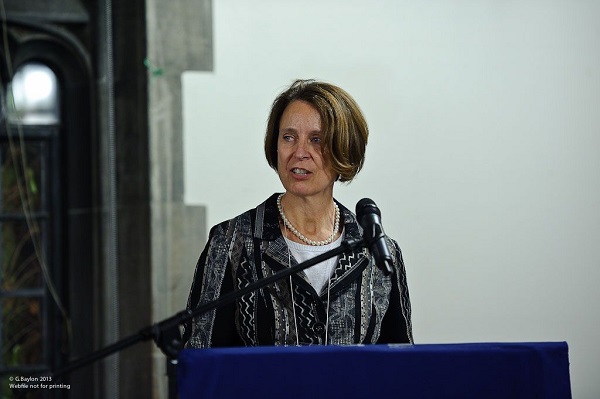 For doctors, a big challenge in treating people with bipolar disorder is knowing when episodes will strike.
For doctors, a big challenge in treating people with bipolar disorder is knowing when episodes will strike.
Predicting the course of the illness and tracking its symptoms is tricky because people with the condition cycle between mania and depression. Doctors rely on observation of behavior or patient description of symptoms, which is imprecise.
What if a simple blood test could help tell a doctor when a patient has — or is about to experience — symptoms of bipolar disorder?
Benjamin Goldstein, an Associate Professor in the Department of Psychiatry at the University of Toronto, is studying several proteins in blood that could provide a quick test to do just that.
For this work and other research, the Depression and Bipolar Support Alliance recently honoured Goldstein with the Gerald Klerman Young Investigator Award. The alliance is the largest patient-run organization dedicated to depression and bipolar disorder in the U.S.
“It’s a huge honour,” said Goldstein, who is also the director of the Centre for Youth Bipolar Disorder at Sunnybrook Health Sciences Centre. “What more can you hope for, than to be acknowledged by the very people you’re trying to help?”
Goldstein was one of more than 160 Faculty of Medicine researchers honoured last week at the Faculty’s 2013 Research Awards Celebration. The event featured talks by several award-winning faculty members, who shared their research insights and personal experiences.
“This event is a wonderful opportunity for us to celebrate the achievements of many members of our Faculty whose dedicated work, international leadership and profound impact have been recognized at home and abroad,” said Professor Catharine Whiteside, Dean of the Faculty of Medicine.
Other awardees included Department of Medicine Professor Peter St George-Hyslop, who won the BIAL Merit Award in Medical Sciences — one the world’s top health research awards — for his research into the origins of neurodegenerative diseases, and Mary Gospodarowicz, a Professor in the Department of Radiation Oncology, who won the 2013 American Radium Society’s Janeway Medal.
The Faculty acknowledged over three dozen professors who received the Queen Elizabeth II Diamond Jubilee Medal, and over 20 faculty members who received new or renewed Canada Research Chairs. The Faculty is home to 121 Canada Research Chairs — the most of any medical school in Canada — and conducts over $1 billion in research annually.
“Research is thriving at U of T Medicine,” said Professor Alison Buchan, Vice Dean of Research and International Relations in the Faculty of Medicine. “We are driven by the spirit of discovery, but we also work to ensure the new knowledge we generate can become new treatments, cures and solutions, improving health and prosperity locally and across the globe.”

Optimize this page for search engines by customizing the Meta Title and Meta Description fields.
Use the Google Search Result Preview Tool to test different content ideas.

Select a Meta Image to tell a social media platform what image to use when sharing.
If blank, different social platforms like LinkedIn will randomly select an image on the page to appear on shared posts.
Posts with images generally perform better on social media so it is worth selecting an engaging image.
Jim Oldfield

Taking Toronto's Health Care History
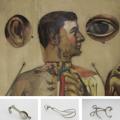 Delivering a baby in the midst of an earthquake. Establishing Peterborough’s first medical-surgical clinic. Assisting in more than 25,000 surgeries over 35 years. The Moir-Cuddys – a three-generation, U of T physician family – have done it all. And they have the medical artifacts to prove it.
Delivering a baby in the midst of an earthquake. Establishing Peterborough’s first medical-surgical clinic. Assisting in more than 25,000 surgeries over 35 years. The Moir-Cuddys – a three-generation, U of T physician family – have done it all. And they have the medical artifacts to prove it.
“My family was not enthusiastic when I told them I wanted to enter medicine, but I was stubborn and went to med school anyway,” recalls Ann Cuddy, a retired surgical assistant and U of T Medicine graduate whose grandfather and father were also U of T-trained physicians. “It was the only thing I wanted to do.”
Collected over a 113-year period, the Moir-Cuddy’s medical instruments – from 1898 to 2011 – are just one fascinating part of the first-ever conference dedicated to Toronto’s health care history, taking place at the Faculty of Medicine [http://medicine.utoronto.ca/] on November 23 and 24.
“Demands on the health sector are greater than ever before, which is why we must use history as a cautionary tale,” says Pier Bryden, one of the organizers of the Taking Toronto’s Health Care History conference and an Assistant Professor in the Department of Psychiatry. “History illustrates the core values of the profession. Knowing our history keeps us honest in the midst of these competing demands. We need to know where we’ve been in order to determine where we’re going.”
This conference will give faculty, students and health care providers a crash course in Toronto’s health care history through lively panel discussions, interesting lectures and a fascinating exhibition of medical artifacts, including those from the Cuddy’s personal collection.
“It’s also been designed to build collaboration amongst various health sciences disciplines,” says Bryden, also the Faculty’s Undergraduate Medical Education ethics and professionalism lead. Conference organizers and attendees come from a variety of disciplines and presentations feature history from a number of faculties, including medicine, nursing, public health, pharmacy, occupational therapy and social work.
“We’re asking today’s doctors to be superhuman and that’s overwhelming at the very least. Health care providers must work as a team – no one person can do it all anymore – and this conference opens the dialogue for professionals of various backgrounds to determine medicine’s future direction,” she says.
Jonathan Fuller, an MD-PhD student who is pursuing a graduate degree in the Philosophy of Medicine in addition to his undergraduate medical training, helped organize the conference because he feels, “History helps define my professional identity and makes me feel like I’m a part of something special, a healing tradition. It makes me critical and humble as I reflect on the fallible nature of medical knowledge.”
“History, like philosophy, brings our assumptions about disease and evidence into the light and counsels us on the importance of interrogating them.”
As for Ann Cuddy, the summers spent at her grandparent’s cottage in the Peterborough-area persuaded her to enter medical school in spite of her family's lack of enthusiasm for the pursuit.
“My dad knew what a commitment a career in medicine would be and thought at that time it would be a difficult life for a woman. But having heard my grandfather talk, I knew it was what I wanted to do.”
If you’re interested in attending, you can register online or Contact torontohealthcarehistory@gmail.com

Optimize this page for search engines by customizing the Meta Title and Meta Description fields.
Use the Google Search Result Preview Tool to test different content ideas.

Select a Meta Image to tell a social media platform what image to use when sharing.
If blank, different social platforms like LinkedIn will randomly select an image on the page to appear on shared posts.
Posts with images generally perform better on social media so it is worth selecting an engaging image.
Nicole Bodnar
